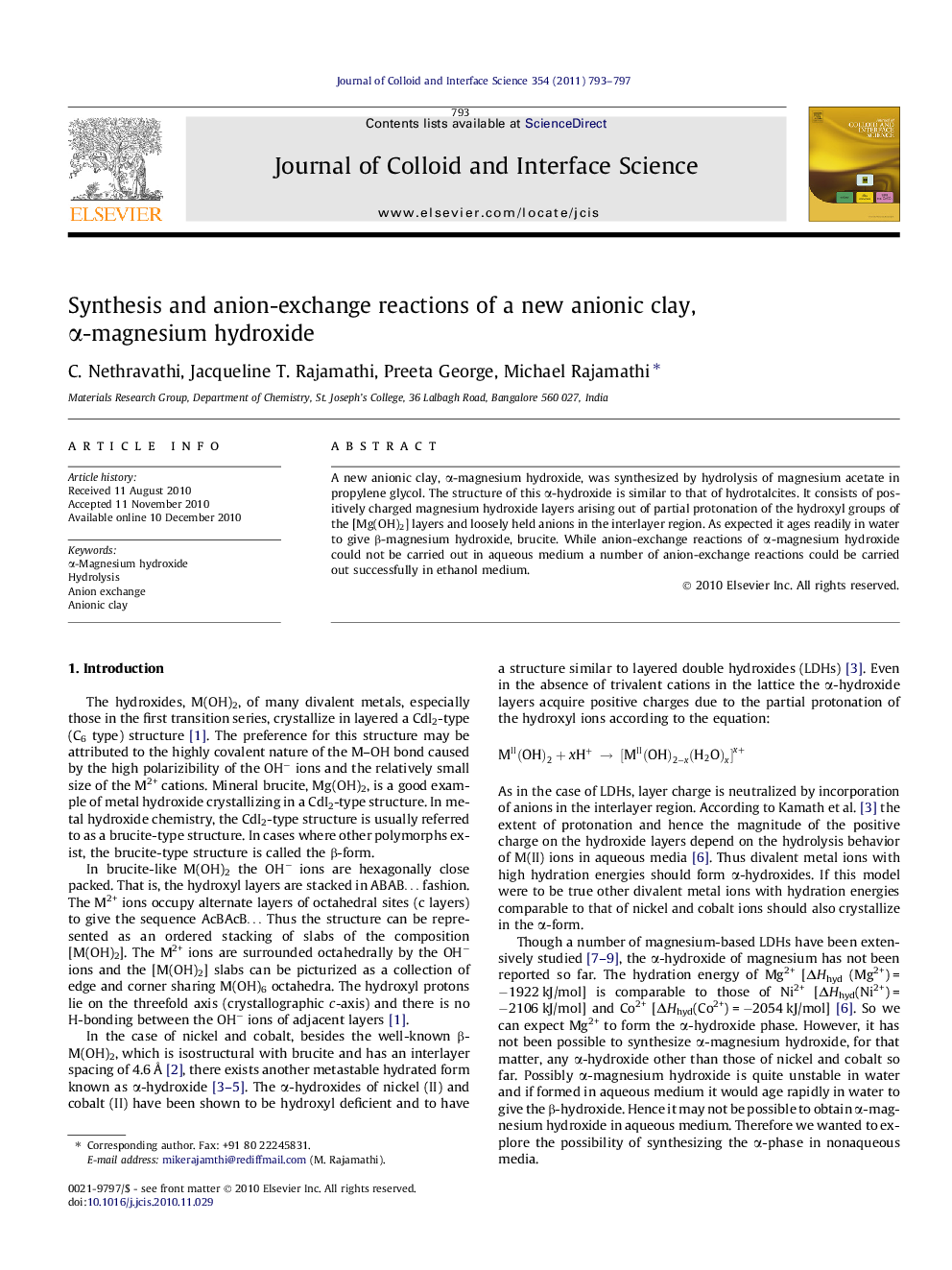| Article ID | Journal | Published Year | Pages | File Type |
|---|---|---|---|---|
| 608947 | Journal of Colloid and Interface Science | 2011 | 5 Pages |
A new anionic clay, α-magnesium hydroxide, was synthesized by hydrolysis of magnesium acetate in propylene glycol. The structure of this α-hydroxide is similar to that of hydrotalcites. It consists of positively charged magnesium hydroxide layers arising out of partial protonation of the hydroxyl groups of the [Mg(OH)2] layers and loosely held anions in the interlayer region. As expected it ages readily in water to give β-magnesium hydroxide, brucite. While anion-exchange reactions of α-magnesium hydroxide could not be carried out in aqueous medium a number of anion-exchange reactions could be carried out successfully in ethanol medium.
Graphical abstractα-Magnesium hydroxide, which is structurally similar to LDHs, could be obtained through acetate hyrolysis in an organic solvent.Figure optionsDownload full-size imageDownload high-quality image (38 K)Download as PowerPoint slideResearch highlights► α-Hydroxides, which are structurally similar to LDHs, are known only in the case of Ni2+ and Co2+. ► For the first time α-hydroxide of Mg2+ is reported in this work. ► Though it is unstable in water we could demonstrate its anionic clay-like behavior through anion-exchange reactions in alcoholic solutions.
